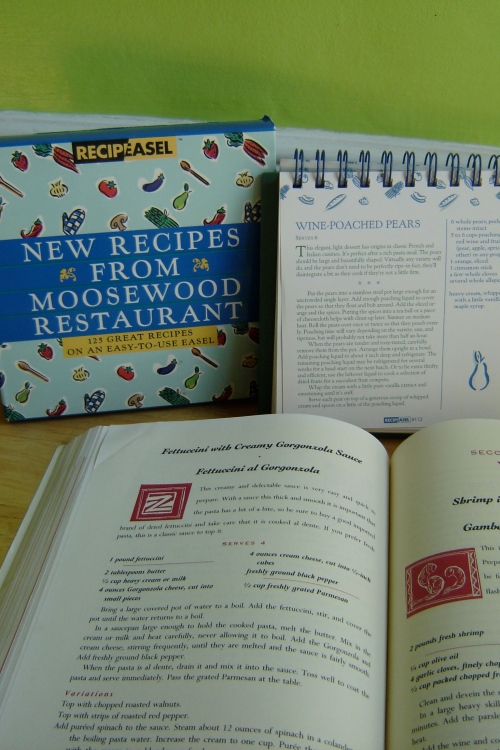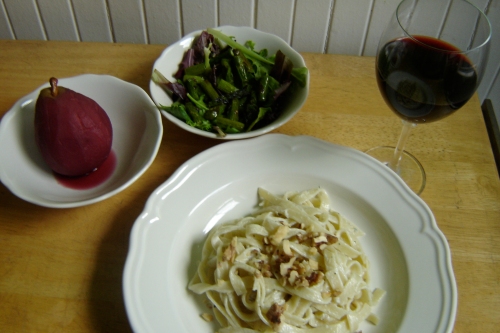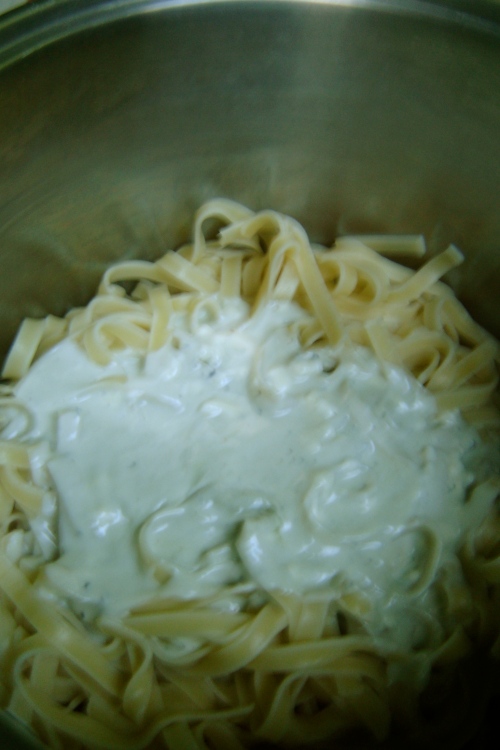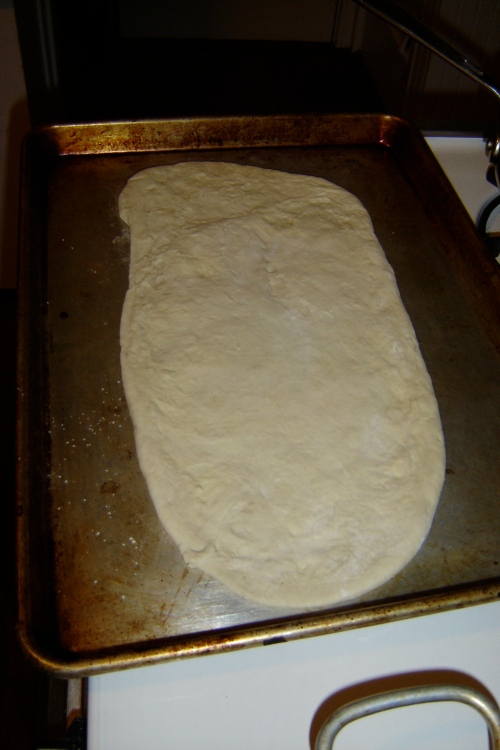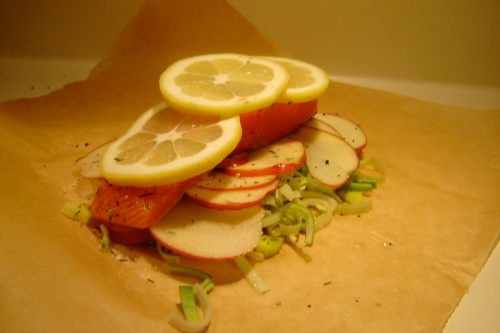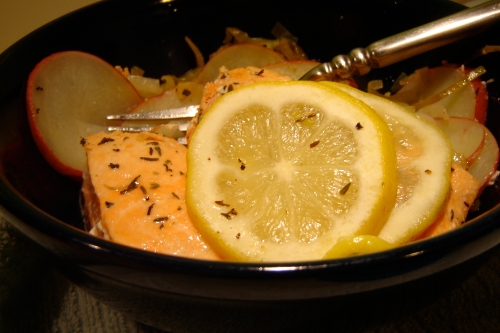My brother and I made pupusas from this Saveur recipe last summer with our CSA veggies. Pupusas are El Salvadoran stuffed masa cakes, typically served with a vinegary slaw and tomato sauce. The Saveur recipe was my first encounter with pupusas, and I really liked the cheesy masa cakes paired with the tangy slaw, called curtido. I wanted to make them again this summer, but was not eating dairy at the time, so I decided to try a black bean version that is vegan. It turns out that beans are a traditional filling for pupusas, along with cheese and meat. Alas, I failed at stuffing the black beans into the masa cakes, but, undaunted, I just decided to spread them on top of plain masa cakes and top with the curtido. They turned out quite tasty, though since they weren’t stuffed with anything they probably aren’t technically pupusas. They are pretty simple to make, so you should give them a try if you want to add a Latin American dish to your arsenal.
I doubled the amounts of the slaw ingredients, because we can all use more veggies in our diet, and I had a lot of vegetables that needed to be used from the CSA.
I used half of a medium head of cabbage, two carrots, one daikon radish (not in the original recipe), one onion, a scallion (another addition, mostly because I wanted some green in the slaw), and a dried guajillo chile (a substitution for the chiles de arbol.) These all got thinly sliced or shredded and tossed in a big bowl with vinegar, sugar, salt, and oregano.
You may notice I used the seeds from the chile – guajillos are a pretty mild chile, so keeping the seeds added just a touch of heat. While the slaw marinated in the fridge, I made the masa dough, which is ridiculously easy, just masa and water.
I was talking to someone at work the other day who is way more experienced in making pupusas than I. She told me that you need to use hot water (not boiling, just hot from the tap) and work the dough a bit, so that it becomes soft. Not having these directions may have been the reason I wasn’t able to stuff the beans into the pupusas. The dough wasn’t elastic enough to encase such a soft filling. Anyway, after giving up on the stuffing attempts, I just took balls of masa dough and patted them into discs.
Then I browned them on each side in a skillet. Another tip the woman at work gave me was to put a little oil on your hands when you are forming the masa cakes, so there is just a touch of oil on them for cooking.
Then all I had to do was slather some black beans on the cakes and top them with curtido. Yum! To be honest, I tend to be pretty skeptical of vegan food. I love dairy, and cooking without it or eggs just sounds like deprivation to me. But these were really tasty. The refried black beans were rich and salty enough to add flavor to the masa cakes, and played off the crunch, tangy flavor, and slight heat of the slaw. I think they were as good as the original cheese version. That said, I think the next time I make them I will use beans and cheese. 🙂
Vegan Pupusas with Refried Black Beans and Curtido adapted from Saveur
1⁄2 cup cider vinegar
3 tsp. sugar
2 tsp. oregano
1 guajillo chile (or other chile you like), chopped
2 medium carrots, peeled and grated
1 medium-large daikon radish (or several small radishes), peeled and shredded
1 yellow onion, thinly sliced
1 scallion, thinly sliced
1⁄2 head green cabbage, shredded
Kosher salt, to taste
1 can refried black beans
2 cups masa harina
1 3/4 cups hot water
vegetable oil
Combine vinegar, sugar, oregano, vegetables, and chile in a large bowl and add salt to taste. Refrigerate while you prepare the masa cakes.
Stir together masa harina and water until a dough forms. Knead dough a bit. If dough is dry and cracks when you handle it, add a bit more water. Put a little vegetable oil on your hands and form golfball sized balls of dough. Pat each ball into a disc shape. Cook the cakes in a non-stick skillet over medium-high heat until lightly browned on each side, approximately 10-12 minutes. Depending on the size of your skillet, you may need to do this in several batches. Keep finished cakes warm in a low oven until the others are ready. To serve, spread each cake with a generous layer of black beans (you can warm the beans if you like, but I didn’t bother) and top with plenty of curtido.













